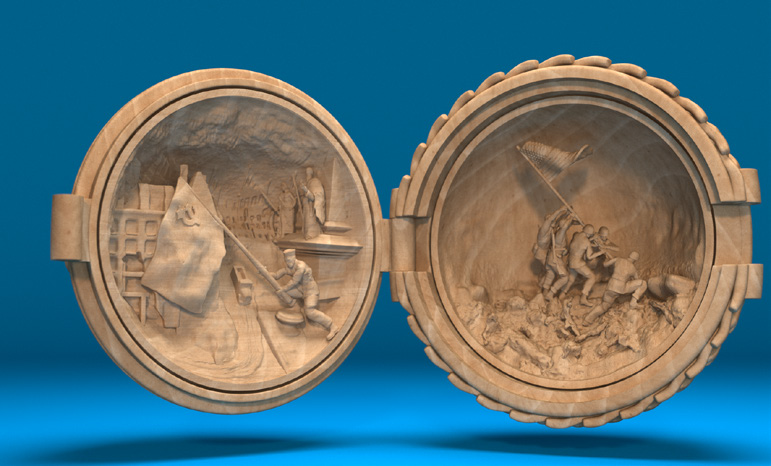The prayer nut, prayer utility, Rijksmuseum – Amsterdam
Prayer nuts are 16th-century devotional objects the a size of a golf ball, made in the Dutch studio of Adam Dircksz. Two are kept at the Rijksmuseum in Amsterdam. I always lose track of time when I
view them, so concentrated do I have to focus to see everything clearly. Inside, you see highly detailed
carvings of religious significance, which fundamentally changed the way the world was viewed at the time -namely, the birth of Christianity. This devotional object was an aid to prayer, inside one of the
prayer notes are two representations: the road Jesus takes to Golgotha and the Crucifixion scene.
In these turbulent times we could also use a little more direction for our moral compass, I think, and so
the idea of creating a series of contemporary prayer notes was born.
Inside Prayer Note
In the inside of the note I want to bring contemporary images that are etched in ón our memory. Like the
image I saw in the newspaper one morning of a Syrian boy, found lifeless on a beach, which was followed by
Angela Merkel’s famous statement, “Wir schaffen das!”.
There are countless of these key moments in our social and political lives; the Tankman, the Napalm Girl,
Nelson Mandela’s walk to freedom, The Falling Man and the assassination of George Floyd to name a few.
I may have changed the subject of devotion, but I certainly have not changed its intensity.
Exterior CT scan and High speed milling
Unlike the insides, I wanted to base the exteriors of the notes on one of the original prayer notes from
the collection of the Amsterdam Rijksmuseum. And so this note, under the personal supervision of the senior
conservator of sculpture, Frits Scholten, ended up in Canon’s most detailed CT scanner, at the Radboud Hospital in Nijmegen. The Canon medical branch conjured up a razor-sharp digital image of the nut,
which I then used to enter the world of five-axis ‘high speed micro milling’ technology. Here they mill incredibly fine detail in
; drills 0.1 mm in diameter are no exception there.
The Firma de Ridder and NeBo special tooling rose to the challenge, to mill the nuts out of boxwood. Hopefully
I will soon be able to hold the first result in my hands.
Inside 3D design
For the inside designs, I am collaborating with Jeroen Brinkhuis, a 3D designer. We
had to generate three-dimensional images of all the contemporary key moments. A lot of digital craftsmanship was required, involving the use of the most advanced AI tools.

